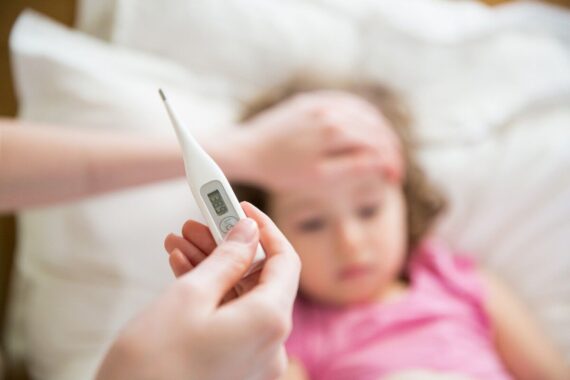GPs should always strongly suspect bacterial meningitis in people with the ‘red flag’ combination of fever, headache, stiff neck and altered level of consciousness, new draft NICE guidance states.
But meningitis should also not be ruled out just because a person does not have one or more symptoms in the combination and should be treated as an emergency when suspected, the recommendations out for consultation warn.
Doctors should be on particularly alert for the condition when immunisations have been missed, in students especially if they are living in large shared accommodation and where there has been exposure to meningococcal of Hib disease.
Meningococcal disease should also be strongly suspected in people with any of haemorrhagic, non-blanching rash with lesions larger than 2 mm (purpura) or a rapidly progressive and or spreading non-blanching rash, the recommendations add.
A full examination should include looking all over the body for a rash, including nappy areas as well as checking for petechiae in the conjunctivae
Yet absence of a rash should not be used to dismiss meningococcal disease when other symptoms are present and it can be harder to detect on brown, black or tanned skin, NICE said.
Any patient suspected of having meningitis whatever the symptom should be transferred to hospital as an emergency immediately, the recommendations out for consultation until October note.
The expert committee said meningitis can present with non-specific symptoms and signs, develop rapidly and can be difficult to distinguish from other infections.
And it reiterates the importance of ‘safety netting’ so individuals and their families or carers know what to look for in new or worse symptoms or a rash changing to non-blanching.
The guidelines will replace previous advice published in 2010 on children up to 16 years and also cover babies over 28 days, young people and adults.
It points out that some key symptoms can be hard to identify in young children and fever is less common in older adults.
The expert committee said while the recommendations were in line with current practice, they would help healthcare professionals ‘recognise and diagnose bacterial meningitis and meningococcal disease earlier’.
NICE said the introduction of meningitis vaccines for teenagers and young adults has seen a reduction in recent years in the incidence of invasive meningococcal disease.
But because of the speed with which it can strike, often with little warning that anything serious is amiss, and its life-threatening potential, it is perhaps one of the diseases most feared, particularly by parents with young children.
A survey of parents commissioned by UKHSA found that parents of babies and young children believe meningitis and septicaemia pose the most serious risk to their children.
In England around 560 people each year are diagnosed with meningitis, around half of who are aged 25 years or more.
Last month students who missed out on meningitis vaccine in school were being urged to contact their GP to make sure they had it before term starts after figures showed one in eight were unprotected.
Pulse October survey
Take our July 2025 survey to potentially win £1.000 worth of tokens














I think it is important to clarify that this guidance mostly relates to Meningococcal Infection, or Meningococcal Disease, although some of the symptoms overlap with bacterial or viral meningitis.
Of course, if you have a headache with your urti, you may have a rhinoviral or adenoviral, or Coronaviral meningitis, even if there is no sign of septicaemia or invasive HiB/Neissierrial disease.
I am not sure how far we need to go to rule out these viral meningitises – especially when we cannot rule them out becasue they are present, but I also know our hospital does not really want lots of viral urti patients sent in with headache and fever unless significantly unwell.
It is an awkward one : perhaps clinical opinion could be involved?